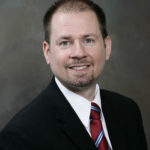
Using one computer to power many has saved money as college budgets have been slashed, but too much of this good thing can lead to “virtualization sprawl”—an emerging problem that one IT leader is determined to avoid.
Karl Herleman, CIO at Miami Dade College (MDC), has, like many technology decision makers, moved his eight-campus school toward virtualization in the past three years. This means one computer in a campus computer lab can power several machines, reducing the IT department’s costs and saving the college on its monthly energy bills.
MDC has trimmed its energy consumption by 10 percent since 2008, thanks largely to virtualization, Herleman said.
And while virtualizing computers and trimming budgets will bring a smile to the faces of deans and provosts, Herleman said, creating too many virtualized machines on a college campus can create a “sprawl” effect that makes it difficult for the college’s IT team to manage the growing number of computers.
“You look at [virtualizing computers] and think, ‘Wow, it’s so easy to create these virtual machines and eliminate the need to buy a bunch of hardware,’” said Herleman, 45, MDC’s CIO for four years after working for technology research company Gartner as an enterprise architect for seven years. “Then you realize you have to deal with a whole new set of problems that come along with that. It can sometimes be worse than it was before you [virtualized machines].”
Colleges and universities will encounter virtualization sprawl if technology officials approve a new computer to support a simple internet application, for example, when that program easily could have been stored on an existing campus server.
Herleman said sprawl is sometimes unavoidable. Some programs don’t operate easily on the same machine, forcing IT departments to approve another virtualized machine to keep programs away from each other on the same hard drive.
With 20 percent of his IT staff cut in the past two years, Herleman said he’s had to become more selective in where the department’s money is directed—targeting campus network programs that will make critical college data available to any employee who needs the data to do his or her job.
“You’re neglecting those strategic initiatives because you don’t have the bodies to do it,” he said. “It might be affecting your service level. … But when you have fewer people, you can get pretty crafty, and you definitely streamline and always try to make things leaner.”
Herleman said the prospect of federal stimulus money running out next year will force college CIOs to focus on IT efficiency, because many open positions won’t be filled and retiring employees likely won’t be replaced immediately. Instead of doing more with less, he said, many campus technology chiefs might be forced to do less with less.
“There is a point where there is no way you can improve the efficiencies beyond where you are,” Herleman said in acknowledging the effects of budget constraints. “I think we have reached that point in higher ed.”
- Research: Social media has negative impact on academic performance - April 2, 2020
- Number 1: Social media has negative impact on academic performance - December 31, 2014
- 6 reasons campus networks must change - September 30, 2014

